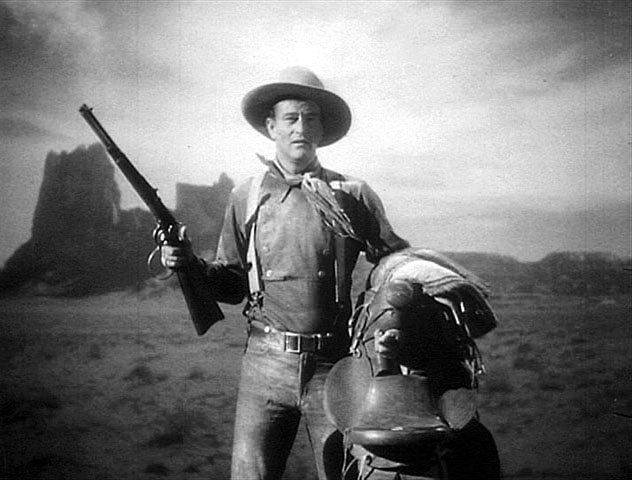WEEK 30
The Western
BRUCE THOMPSON (UCSC)
The open range for cattle drives lasted less than a quarter of a century after the Civil War, and the last major Indian war ended in 1890 with the defeat of the Sioux at Wounded Knee. In 1890, the US Census Bureau announced the closing of the frontier. Yet for more than half of the century that followed, the Western was one of the pillars of American popular culture, first on the stage (Buffalo Bill Cody’s Wild West show, in literature (starting with Owen Wister’s The Virginian, 1902), cinema (starting with Cecil B. DeMille’s The Squaw Man in 1914), and on television (Westerns were the dominant genre through the first half of the 1960s). How do we account for this extraordinarily long and rich afterlife of the frontier in American popular culture? Why did so many of the finest and most influential American directors (John Ford, Howard Hawks, Anthony Mann, George Stevens) and actors (Gary Cooper, John Wayne, Jimmy Stewart, Henry Fonda, Robert Mitchum, Kirk Douglas, Robert Ryan, Glenn Ford, Van Heflin, Clint Eastwood) do so much of their best work in this genre? What exactly was "the Western," and how did it evolve? A preliminary answer: the Western offered attractive versions of heroism, placed within a historical context that seemed to evoke something essential about our "national character." The great popularity of the genre, writes Forrest Robinson in his book Having It Both Ways: Self-subversion in Western Popular Classics, "is quite obviously the result of this emphasis on the heroic, with its abundance of vigorous action in colorful settings, and its attention to such values as courage, independence, self-reliance, and the stoical indifference to pain." But having established these values as central to our national self-image, the writers and film directors who developed the canon of Western literature and cinema then proceeded to complicate them: revising the stereotypes, and sometimes subverting them. And sometimes, as in the books of Elmore Leonard and Cormac McCarthy, and the films of Ford, Hawks, Mann, and Stevens, they have produced works of art that both celebrate and criticize our culture at the same time.
RECOMMENDED READING
Renowned storyteller Dee Brown, author of the bestselling Bury My Heart at Wounded Knee, recreates the struggles of Native Americans, settlers, and ranchers in this stunning volume that illuminates the history of the old West that’s filled with maps and vintage photographs. Beginning with the demise of the Native Americans of the Plains, Brown depicts the onrush of the burgeoning cattle trade and the waves of immigrants who ultimately “settled” the land. In the retelling of this oft-told saga, Brown has demonstrated once again his abilities as a master storyteller and an entertaining popular historian. By turns heroic, tragic, and even humorous, The American West brings to life American tragedy and triumph in the years from 1840 to the turn of the century, and a roster of characters both great and small: Red Cloud, Sitting Bull, Geronimo, Dull Knife, Crazy Horse, Captain Jack, John H. Tunstall, Billy the Kid, Pat Garrett, Wyatt Earp, the Hole-in-the-Wall Gang, Wild Bill Hickok, Charles Goodnight, Oliver Loving, Buffalo Bill, and many others.


